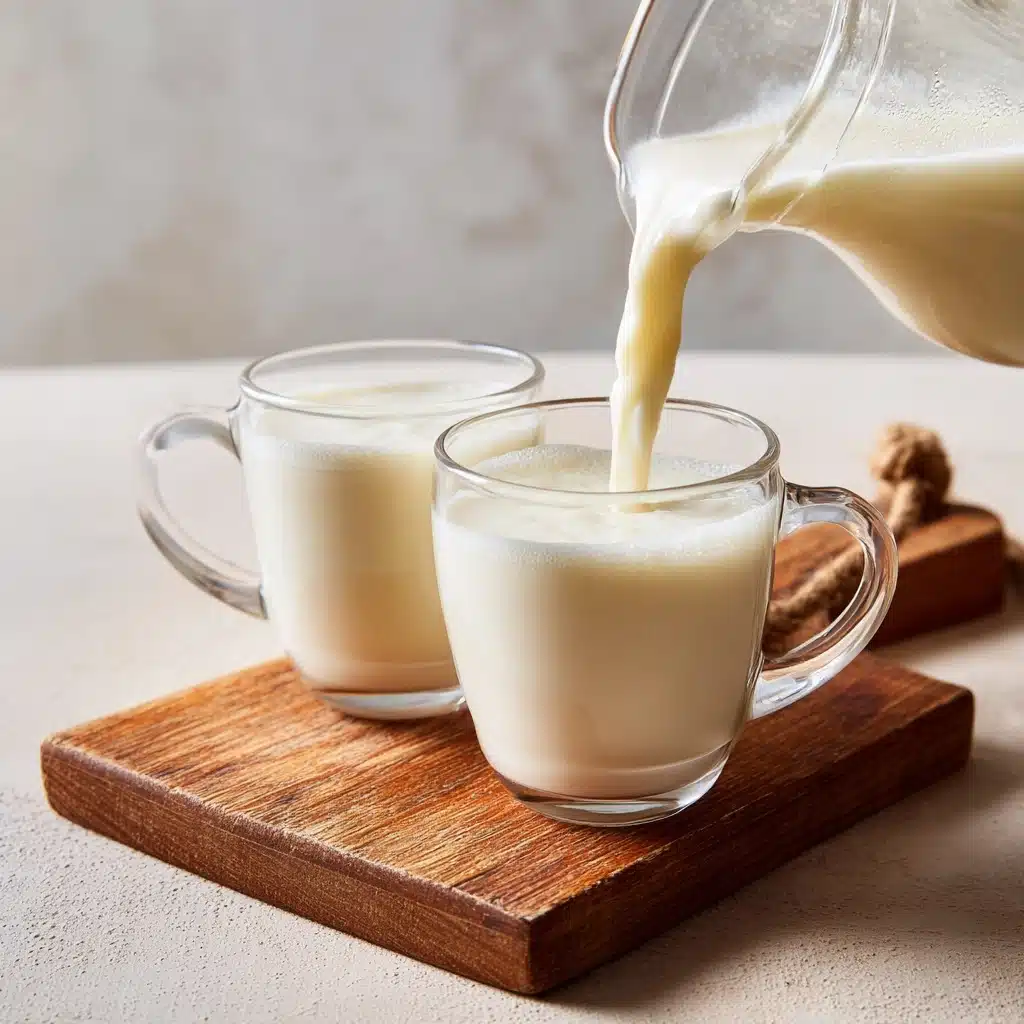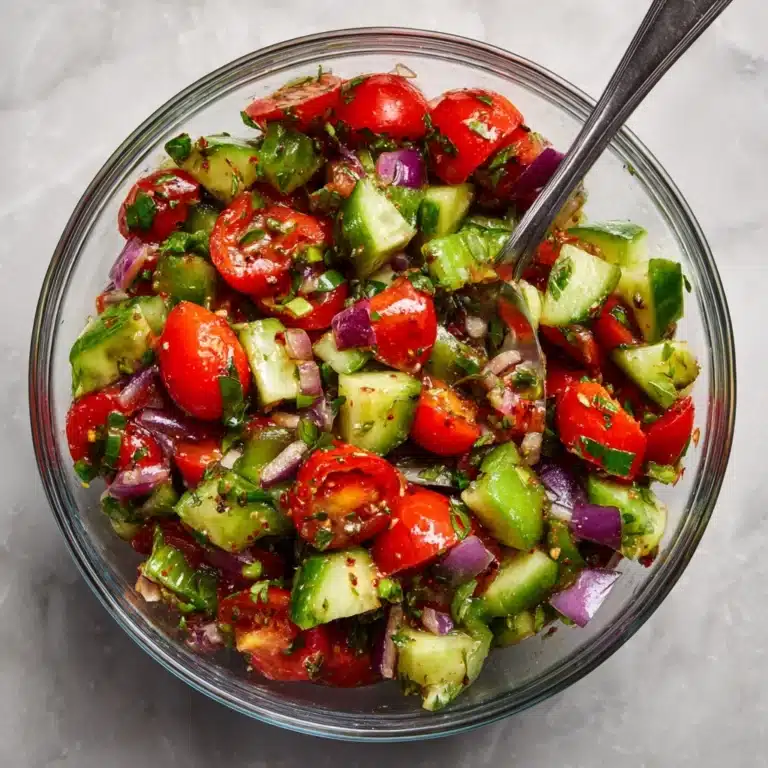Sour Milk is that secret, old-fashioned ingredient that instantly elevates pancakes, biscuits, and cakes with luscious tenderness and a subtle tang. Don’t worry if you haven’t planned ahead to buy buttermilk—making your own sour milk at home is incredibly easy and takes just a few minutes. It’s a lifesaver whenever you want that homey, classic flavor in both savory and sweet recipes. Let’s dive into how this humble ingredient can transform your baking and why it deserves a spot in your fridge.

Ingredients You’ll Need
-
Ingredients:
- 2 cups whole milk
- 1 tablespoon lemon juice or white vinegar
How to Make Sour Milk
Step 1: Combine the Milk and Acid
Pour 2 cups of whole milk into a scrupulously clean glass or ceramic container. Add 1 tablespoon of either lemon juice or white vinegar. The acid is the secret agent here—it helps the milk curdle and develop the recognizable tang that defines sour milk. Use a gentle hand and stir just enough to combine.
Step 2: Let It Sit and Curdle
Leave your milk and acid mixture on the counter at room temperature for about 10 minutes. This short wait gives the acid time to react with the milk proteins, thickening and curdling the mixture. You’ll see the milk begin to separate and take on a slightly thicker, almost yogurt-like consistency—this is exactly what you want!
Step 3: Use Immediately or Store
Once your sour milk is thickened and nicely tangy, it’s ready to use. Simply substitute it cup for cup in any recipe that calls for buttermilk or sour milk. If you’re not baking right away, pop the container in the refrigerator and plan to use it within 24 hours for best freshness and flavor.
How to Serve Sour Milk

Garnishes
Pour your freshly made sour milk into a small pitcher and give it a jaunty sprinkle of fresh lemon zest, a twist of black pepper, or even a dash of cinnamon if serving alongside breakfast or brunch dishes. These bright garnishes tease out the milk’s natural tang and add just a touch of flair.
Side Dishes
Although sour milk is mostly used as a baking ingredient, it shines on the breakfast table: try it alongside warm biscuits, fluffy pancakes, or hearty oatmeal. Drizzle a spoonful over granola, or stir into scrambled eggs for extra creaminess.
Creative Ways to Present
Why not serve your homemade sour milk in a clear glass bottle with a handwritten label? Tuck it next to a stack of golden pancakes or freshly baked scones for a charming, farmhouse-inspired breakfast spread. Or, swirl it into chilled summer soups or salad dressings to wow your guests with its tangy depth.
Make Ahead and Storage
Storing Leftovers
Keep any leftover sour milk in a clean, airtight bottle in the refrigerator. It will stay fresh and deliciously tangy for up to 24 hours. Give it a gentle shake before using, as separation is natural.
Freezing
Technically, you can freeze sour milk in an airtight container, but it’s best used fresh. Freezing may cause changes in texture and separation, so use thawed sour milk only in cooked or baked recipes where appearance doesn’t matter.
Reheating
There’s no need to reheat sour milk; use it chilled straight from the fridge, or simply bring it to room temperature if your recipe specifies. If it thickens further after chilling, just whisk lightly before adding to your dish.
FAQs
What’s the difference between sour milk and buttermilk?
Sour milk is simply milk coagulated with acid (like lemon juice or vinegar), while buttermilk is a byproduct of churning cream or is cultured specifically with bacteria. Both provide a tangy flavor, but their origins and flavors are slightly different. Still, you can use sour milk as a buttermilk substitute, especially in baking!
Can I use low-fat or non-dairy milk to make sour milk?
Absolutely! While whole milk offers the richest taste and texture, low-fat or even non-dairy milks like soy or almond can be soured with the same acid-for-curdling method. Just keep in mind that the consistency and flavor may be a little different.
Is sour milk safe to drink on its own?
Homemade sour milk made with fresh milk and acid is perfectly safe to drink, though its tangy taste and curdled texture might not be for everyone. It’s most beloved as a baking ingredient or in savory applications, but go ahead and taste—it’s deliciously old-school!
Can I make a larger batch for later use?
You can double or triple this recipe easily, but remember: homemade sour milk is at its best when fresh. Store larger batches in the fridge and use within 24 hours for that signature tang and thickened texture.
Why is my sour milk not thickening?
If your milk isn’t thickening, check the freshness of your lemon juice or vinegar, and ensure your milk is at room temperature before adding the acid. Sometimes, lower-fat milks or colder temperatures slow down the curdling process—just give it a little more time.
Final Thoughts
If you’ve never made sour milk at home, you’re in for a treat: there’s nothing quite like the fresh, creamy tang it brings to your favorite breads, cakes, and morning pancakes. I hope you give this super-easy method a try and let sour milk earn its place among your go-to kitchen staples!
Print
Sour Milk Recipe
- Total Time: 15 minutes
- Yield: 2 cups 1x
- Diet: Vegetarian, Gluten-Free
Description
Learn how to make your own sour milk quickly and easily at home using just two simple ingredients. This homemade sour milk is perfect for baking recipes that call for buttermilk, adding a tangy flavor and tender texture to your favorite treats.
Ingredients
Ingredients:
- 2 cups whole milk
- 1 tablespoon lemon juice or white vinegar
Instructions
- Pour the milk and acid: Pour the milk into a clean container. Add the lemon juice or vinegar and stir gently.
- Curdle: Let the mixture sit at room temperature for about 10 minutes until it curdles and thickens slightly.
- Use or store: Use the sour milk immediately in recipes that call for buttermilk or sour milk. If not using right away, store in the refrigerator and use within 24 hours.
Notes
- Sour milk can be made with any type of milk, but whole milk gives the best texture.
- Use fresh lemon juice or vinegar for consistent results.
- This is a quick substitute for buttermilk in baking.
- Prep Time: 5 minutes
- Cook Time: 10 minutes (curdling time)
- Category: Ingredient, Dairy Substitute
- Method: Acid curdling
- Cuisine: Global
Nutrition
- Serving Size: 1/2 cup
- Calories: 75
- Sugar: 6g
- Sodium: 50mg
- Fat: 4g
- Saturated Fat: 2.5g
- Unsaturated Fat: 1g
- Trans Fat: 0g
- Carbohydrates: 6g
- Fiber: 0g
- Protein: 4g
- Cholesterol: 15mg







